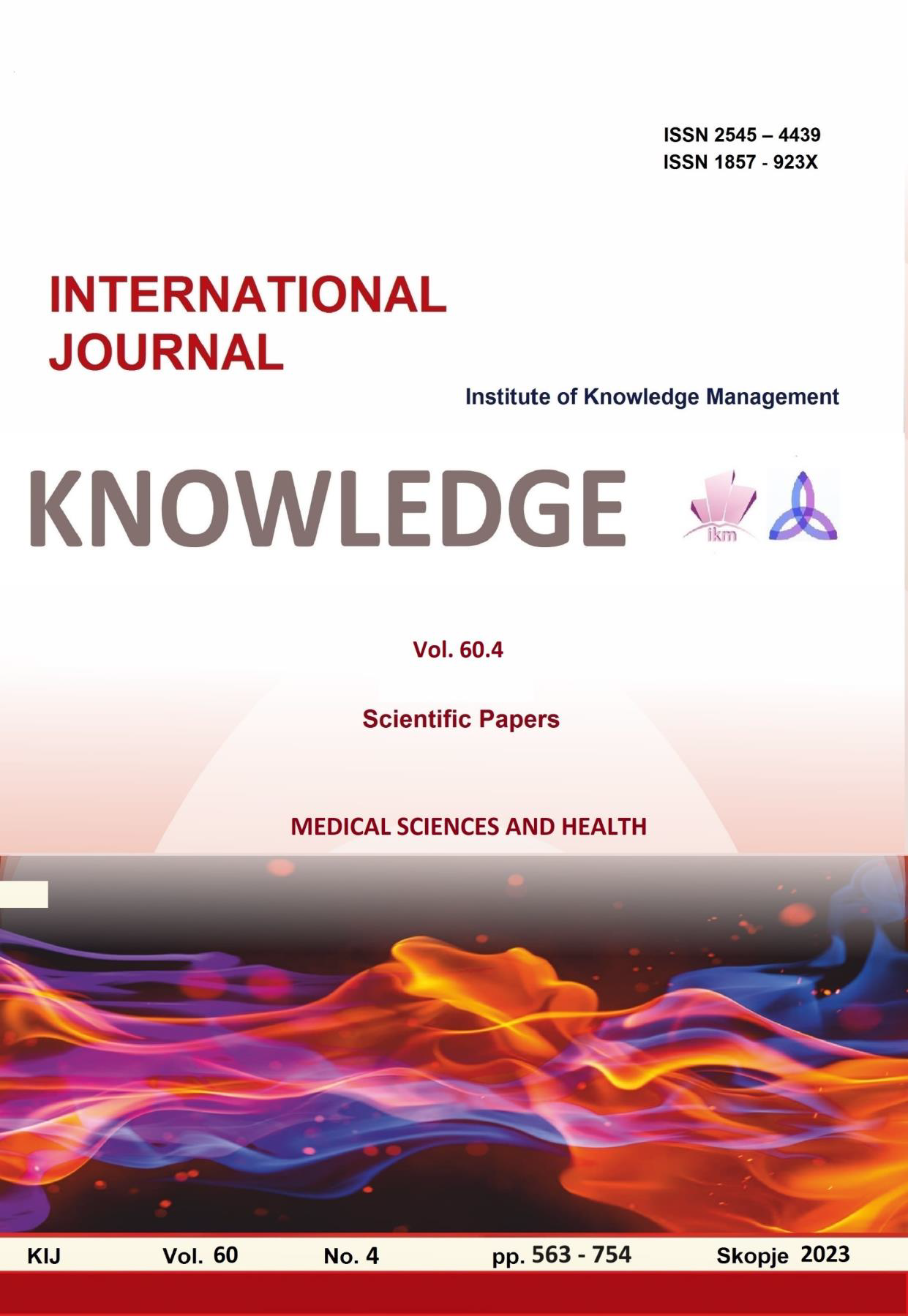ACUTE RETINAL NECROSIS IN A PATIENT WITH LEUKOPENIA AND FOLLICULAR NON-HODGKIN LYMPHOMA IN REMISSION
ACUTE RETINAL NECROSIS IN A PATIENT WITH LEUKOPENIA AND FOLLICULAR NON-HODGKIN LYMPHOMA IN REMISSION
Author(s): Vesna Cheleva Markovska, Stefan PandilovSubject(s): Social Sciences, Sociology, Health and medicine and law
Published by: Scientific Institute of Management and Knowledge
Keywords: retinitis;varicella zoster virus;panuveitis;retinal necrosis;leukopenia;lymphoma
Summary/Abstract: Acute retinal necrosis is a rare ophthalmic condition characterized by diffuse uveitis, retinal vasculitis, and subsequent retinal necrosis. It can occur in both immunocompetent and immunocompromised patients, with no gender or age predispositions. Etiologically, it is most often caused by the Varicella Zoster and Herpes Simplex viruses, however, cases have been described where Cytomegalovirus and Epstein-Barr virus are the causes of this condition. Bilateral affection is found in more than 1/3 of cases and is even higher in immunocompromised patients. The diagnosis is made clinically, and the etiological agent can be confirmed by polymerase chain reaction (PCR). Treatment is based on systemic antiviral therapy, primarily Acyclovir, followed by corticosteroid therapy and Aspirin. The aim of this paper is to present a case of acute retinal necrosis, a rare ophthalmic manifestation in a patient with leukopenia due to chemo-immunotherapy for the treatment of follicular non-Hodgkin's lymphoma. A 62-year-old female patient was sent to PHI University Clinic for eye diseases in Skopje by a hematologist due to a decrease in vision first in the right and then in the left eye in the past two weeks. For several years, the patient has been treated by a hematologist for follicular non-Hodgkin's lymphoma. Immediately before the ophthalmological event, the patient had leukopenia as a result of the last cycle with chemo-immunotherapy. The best-corrected visual acuity at the initial examination of the right eye was 0.4; and on the left 0.6. Using biomicroscopic and funduscopic findings accompanied by echographic features and fluorescein angiography of the posterior segment, a working diagnosis of acute retinal necrosis was made and confirmed by viral serology and PCR from vitreous punctate. Varicella Zoster virus was isolated as the cause of retinal vasculitis and necrosis. Appropriate systemic antiviral, corticosteroid therapy and Aspirin were applied to the patient for several months. In addition, postischemic retinal areas were barraged to prevent possible retinal ablation, with laser photocoagulation. During the investigation, there was a gradual improvement in visual acuity, which at the last examination was 0.6 on the right eye; 0.9 on the left eye, respectively. Timely diagnosis and appropriate treatment in patients with this ophthalmic condition, especially when it is presented in an immunocompromised patient, is of crucial importance for preserving visual function and preventing numerous ophthalmic and systemic complications.
Journal: Knowledge - International Journal
- Issue Year: 60/2023
- Issue No: 4
- Page Range: 639-642
- Page Count: 4
- Language: English

